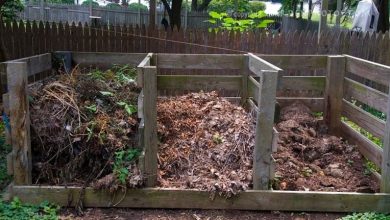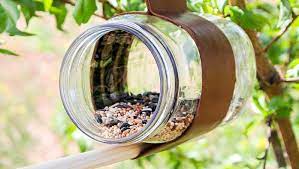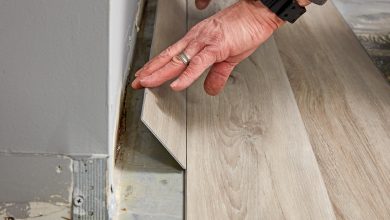DIY Christmas Tree Ideas to Brighten Your Home
Decorating your home with festive touches helps get you and your loved ones into the holiday spirit. While a traditional Christmas tree can be lovely, it can also be costly and time-consuming. If you’re looking for creative and budget-friendly options, DIY Christmas trees are a wonderful alternative. There are so many unique ideas you can try using materials you likely already have around the house.
Diy Christmas Tree from Branches
One charming decoration idea is making a Christmas tree from natural tree branches. Australia has many beautiful native trees that are perfect for this project. Eucalyptus branches have a lovely light texture and fragrance that embody the spirit of summer Christmas down under. You can also use pine, cypress, or other needle-bearing branches for a traditional tree look.
To assemble your branch Christmas tree, start by collecting various sizes of branches ranging from approximately 1-4 meters in length. The longer branches will form your tree’s structure while smaller branches fill it out. Lay your branches out on the floor or a table and experiment with different arrangements until you achieve a pleasing conical shape. Once happy with the positioning, use florist wire, string, fishing line, or similar material to securely tie the branches together at their bases where they meet.
For added stability, insert the trunk of your branch tree into a heavy pot, bucket, or vase filled with sand, stones, or floral foam for stability. You can also stand it in a sturdy tree stand. Then comes the fun part – decorating your branch tree! Adorn it with pinecones, berries, mini ornaments, tinsel, and fairy lights. Branch trees make a lovely rustic centerpiece and blend seamlessly with Australia’s natural surroundings.
Diy Christmas Tree Wall Hanging
For those with limited floor space, a wall-mounted DIY Christmas tree is a great alternative. It adds festive cheer without taking up valuable real estate. Paper is a simple yet effective material for creating a wall tree. Start with a large sheet of construction paper, cardstock, or thin cardboard in your preferred tree shape – triangular, rounded, or more abstract. Draw guidelines to map out where you’ll make cuts for branches.
Using scissors, cut strips in a staggered leaf-like pattern radiating out from the center trunk area. The longer strips will form the lower branches while smaller strips create foliage higher up. Once complete, fluff the paper strips to give dimension and shape. For sturdiness, glue gun the branch bases to securely adhere them to the backing sheet. Then give your paper tree a coat of clear sealer, varnish or Mod Podge to protect it.
Hang your finished wall tree using strong twine, fishing line, or ornament hooks hidden behind. Add string lights, glittery garland, miniatureature ornaments – anything lightweight. Wall trees are perfect for small apartments or for mounting above mantles. Kids can get creative by cutting unique branch patterns, too.
Diy Christmas Tree Paper Lanterns
Speaking of creative kids’ activities, paper lantern Christmas trees evoke a joyful celebratory mood. Gather tissue paper, cardstock, glue, and battery-operated tea lights. Begin by making Christmas tree lantern templates in different sizes on cardstock for uniform shapes. Cut multiple lanterns following the templates using tissue paper in seasonal hues like red, green, and gold.
Once cut, fold the tissue paper at the center line and glue the edges together to form conical lanterns. Add festive details like glitter, sparkles or decorative stickers before the glue fully dries. Punch holes at the lantern tops and thread string or decorative cord through to hang them with. Gather your finished lanterns of varying sizes together overhead or on walls for a magical layered effect when lit up.
Lantern trees bring warm, cheerful light during magical Australian summer nights. Let the kids get creative decorating theirs however they please! A DIY activity everyone will love partaking in.
Diy Christmas Tree for Kids: Handprint Tree Craft
Another kid-favorite tree craft incorporates their tiny handprints. Have little ones wash and dry their hands thoroughly. Then lay sheets of paper or cardstock out and guide them to press their palms firmly into the sheets, leaving colorful handprint “branches.” Older children can add fingers splayed out for extra decorations.
Once all handprints are firmly imprinted, cut out around each shape to detach it from the sheet. Arrange the cut-out handprints on a large sheet of poster board or construction paper in a conical Christmas tree shape overlapping slightly. Secure them down using a glue stick, double sided tape or glue dots. For the finishing touch, hot glue ping pong balls, pom poms or googly eyes over finger/thumb print areas to resemble ornamental balls.
Kids will treasure their unique handprint trees for years to come. Display them proudly on the fridge, above the fireplace mantel, or in front entryways as cheerful homemade art. All materials required are kid-safe and ensure hours of creative seasonal fun!
Faq On Diy Christmas Trees
How do you make a simple Christmas tree out of cardboard?
One of the easiest DIY trees uses materials around the house – cardboard and paint or markers. Trace and cut multiple graduated sizes of triangular tree shapes from cardboard boxes. Paint them green, and let them dry fully. Stack the cardboard triangles on a tabletop overlapping slightly to form a conical tree shape. You can also cut strips of cardboard leaves or snowflakes as extra decorations to hot glue on. Hang mini candy canes, paper chains, or ornaments made from colored paper to top it off!
How do you make a Christmas tree with fruits and vegetables?
An eco-friendly and delicious alternative is constructing an edible fruit and veggie tree. Skewer pineapple wedges, kiwifruit halves, strawberries, and halved red grapes on wooden skewers to form your tree “branches.” Stand them in a glass vase. Layer citrus slices into rings to resemble decorations. Make “ornaments” by punching out holly leaf shapes from green cabbage or kale. Top your fruit tree off with a Honeycrisp apple “treetopper” for a sweet centerpiece that can be partially or fully eaten afterward!
How do you make a Christmas tree unique?
There are endless creative ways to design one-of-a-kind trees. Try assembling a tree completely from items collected on beachcombing adventures like shells, coral, driftwood, and sea glass. Or arrange a sculptural tree using branches spray painted dazzling metallic colors. You could also form a tree shape by twisting and weaving colorful floral wire and stringing twinkle lights throughout. Go abstract by hanging glass ornaments, pinecones, and nesting dolls on multi-level wooden shelves. Use your imagination – unique trees reflect the maker’s personality!
What is the real name of Chris Tree?
The trees most associated with Christmas celebrations are actually called Christmas trees. However, there are earlier traditions from which they stem. Christians adapted the use of evergreen trees, wreaths and garlands as symbols of everlasting life from pagan winter solstice festivals. Some cultures referred to decorated trees during winter months as Christing trees or Christbaum (German for Christmas tree.) Eventually the name Christmas tree standardized in English speaking countries as its bright greenery and lights became synonymous with spreading Christmas cheer.
What is used to make a Christmas tree?
Traditionally, most Christmas trees are made from shaped and trimmed conifer tree species. Some popular varieties used commercially and for homeowners include Douglas fir, Noble fir, Fraser fir, Scotch pine, white pine, and spruce. Their soft needles hold ornaments well, and their natural conical shapes resemble traditional tree designs. Artificial trees can also be made of plastic or polyethylene for a faux natural look. Less common natural materials used include eucalyptus branches, paperbark, bamboo stalks – anything that can withstand the weight of lights and decor when arranged conically. Non-plant materials like driftwood, shells, and branches are also made for unique sculptural DIY Christmas trees.



